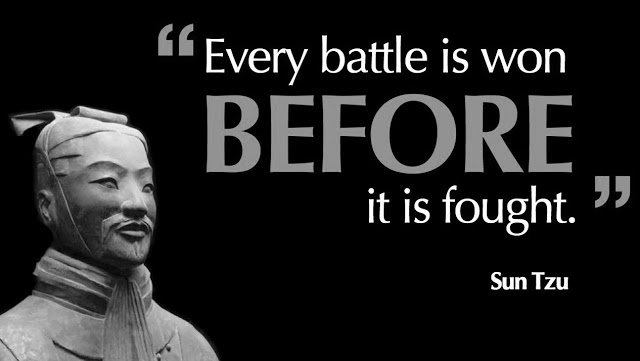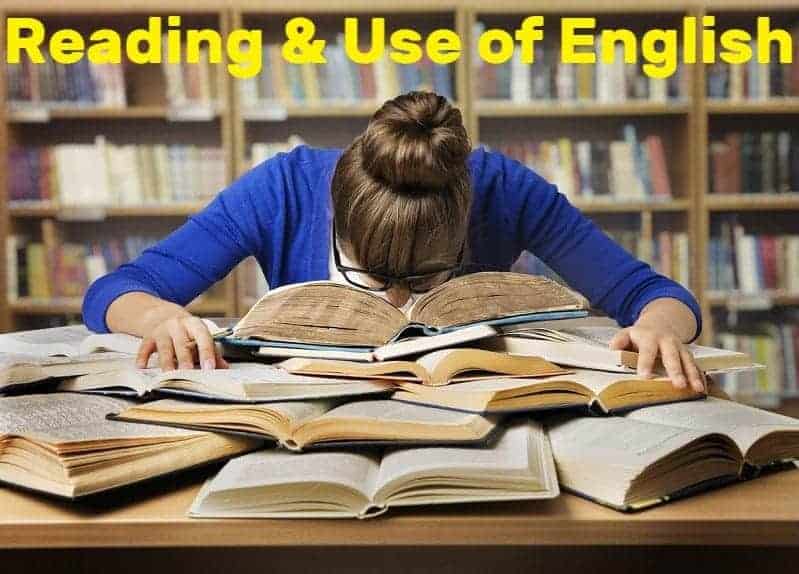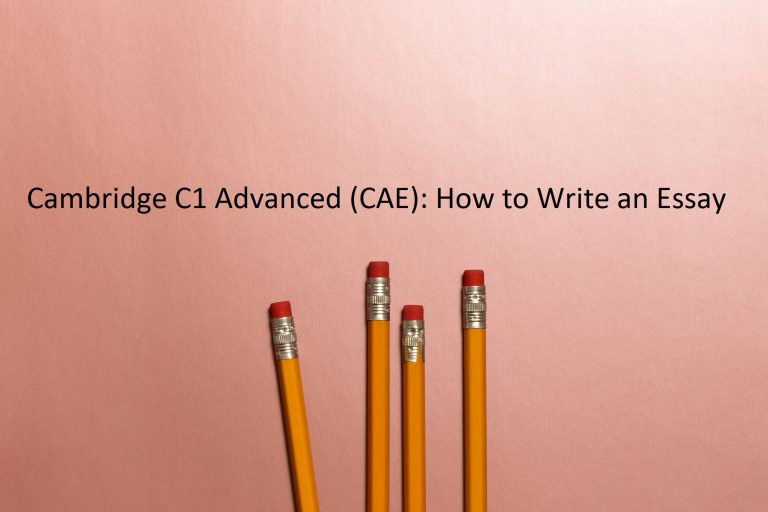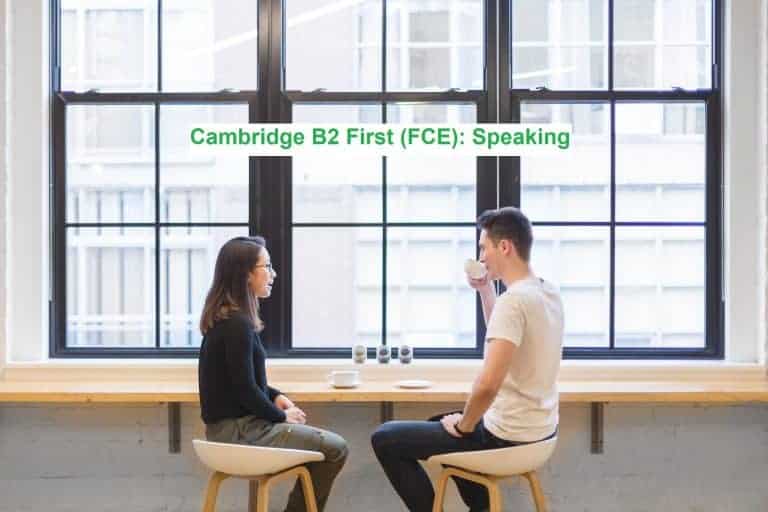Reading & Use of English
Every time I want to do exam practice in my classes I can see that my students prefer some parts of the FCE exam to others. There is one group who like speaking and listening or any other combination, but there aren’t many who enjoy Reading and Use of English (R&UoE). Both parts of this paper are rather difficult, but the Use of English portion might be the most difficult section of the whole FCE exam. For me, it is important to minimize my students’ fear by reminding them of some very important things:
Reading and Use of English includes two parts of the exam – Reading is the one part and Use of English is the other. Therefore, it is important to understand that you basically take two exams at the same time and you get two different scores. To pass you have to be clear about what you have to do in each task, how to prepare yourself for the exam as well as tips and strategies to manage your time effectively in 75 minutes.
In this article I’m going to give you a general overview over the R&UoE exam paper plus some tips that will help you even before you take the exam. If you want to get more information on each part of the exam you can click on any of the buttons below.
Reading and Use of English Part 1Find out moreReading and Use of English Part 2Find out moreReading and Use of English Part 3Find out moreReading and Use of English Part 4Find out moreReading and Use of English Part 5Find out moreReading and Use of English Part 6Find out moreReading and Use of English Part 7Find out more
Previous
Next
Time is the enemy
R&UoE is a very challenging exam paper. The reason for this is not only that you have to prepare well and know a lot of different grammar and vocabulary, but also that you have a very limited amount of time. You only get 75 minutes to complete all seven parts, which comes to around 10 minutes per part plus 5 minutes to transfer your answers onto the answer sheet.
As a result, you need to study and practise different tips and strategies. These little helpers can make the difference between low and high scores. Ask yourself if you want to take an exam that you pay a lot of money for with little preparation or if you want to do everything you can to get the best result possible. If you are one of the people in the second group, keep reading and take the first step towards becoming a boss at R&UoE and Cambridge B2 First.
Let’s have a look at the most important features of the exam as well as the different parts of R&UoE.
The different parts of Reading & Use of English
The FCE exam has five parts which you have to do in four different papers:
- Reading and Use of English
- Writing
- Listening
- Speaking
Reading and Use of English is the hardest paper for many students because of its many different parts, the amount of text you have to read (ca. 2200 words) and the very narrow time window with only 75 minutes to complete everything. As we deal with two parts of the exam, Reading AND Use of English, this paper counts 40% of your overall grade.
Luckily, there are things you can do to make your life easier and to increase your chances of a great result. First of all, however, have a look at the different parts.
Part 1 – Multiple choice cloze (A cloze is a text with gaps.).
You have to fill in eight gaps by choosing from options A, B, C or D. This part tests your vocabulary, especially collocations, and phrasal verbs. You get 1 mark for each correct answer.
Part 2 – Open cloze
In this part you have to fill in eight gaps in a text again, but you don’t get any options. You decide what the missing word must be. This part focusses more on grammar and some vocabulary. For many students Part 2 is the hardest one as you don’t get any options to choose from. Again, you get 1 mark for each correct answer.
Part 3 – Word formation
You get a text with eight gaps. For each gap you get one word which you have to change so the grammar and meaning fit in the sentence. Here you have to show how well you know word families and if you can change words by using prefixes and suffixes. Normally, my students are OK with this exam task. For a correct answer you get 1 mark.
Part 4 – Key word transformation
Here you see one complete sentence and a second sentence with a gap. You have to fill in the gap so the two sentences have the same or a very similar meaning. You have to use between 2-5 words in the gap and you get one word which you have to use in the gap, but you must not change the word. Part 4 is a lot more focussed on grammar than Part 3, but you still need to know collocations and phrasal verbs if you want to get good marks here. On the positive side, you can get up to 2 marks for a correct answer.
Part 5 – Multiple choice
You read a text and answer six multiple-choice questions. The focus in this task is on many different reading skills like gist, detailed reading, the opinion of the author, etc. This part is important because you get 2 marks for each correct answer.
Part 6 – Gapped text
You read a text in which six sentences are missing. You have to put one sentence in each gap. However, there are seven sentences to choose from. In this part you have to show that you can find information which connects the text with the removed sentences. The good thing about this part is that you get 2 marks for each correct answer. However, you have to be lucky and get a good text as I have seen very difficult ones that my students struggled with a lot.
Part 7 – Multiple matching
You get a text which is broken up in 4-6 parts and ten questions. Your task is to match each question to the part that gives you the answer to the question. The focus is on reading for detailed information. Here we go back to 1 mark for each correct answer. From my experience, this task is not the hardest one as the information between question and text have to match perfectly so there is really just one choice. My students usually see good results.
Before we move on…
I know that this is a lot of information and it can be confusing and overwhelming, but don’t worry too much. The rest of this article is going to focus on one general strategy for the exam as well how to prepare beforehand. If you want to dig deeper into each part of R&UoE, have a look at my more detailed articles for each part. Simply click one of the links below.
Reading and Use of English Part 1Find out moreReading and Use of English Part 2Find out moreReading and Use of English Part 3Find out moreReading and Use of English Part 4Find out moreReading and Use of English Part 5Find out moreReading and Use of English Part 6Find out moreReading and Use of English Part 7Find out more
Previous
Next
Which parts should you start with?
The question might sound a little bit silly. The obvious answer is, “Of course, we start with Part 1 and work our way through to Part 7”. But not so fast. Once we take a closer look at how the exam is designed, we can think about the best way to attack and conquer. As the great Sun Tzu says in The Art of War:

You see that if you prepare, your chances of winning and getting a great result become higher. It is my job to give you the information, but it is yours to work with it. So, what can we find out if we check out the exam?
a) Don’t forget that there are two exams in one
Many FCE gurus don’t make this distinction, but it is actually very important information. You get two results in Reading & Use of English and some parts of the exam are part of the reading portion while other parts belong to Use of English.
- Reading: parts 1, 5, 6 and 7
- Use of English: parts 2, 3 and 4
From my experience, more students have problems with Use of English or parts 2, 3 and 4. This can help you when you prepare and practise as you can focus on your weaknesses and the specifics of these parts.
b) Not all parts are equal
I could have put this in the first part, but I think it deserves its own paragraph. There are certain categories we can put the different parts in and create a strategy.
- Parts 1, 2, 3 and 4 focus on grammar and vocabulary while parts 5, 6, 7 test your reading comprehension skills.
- Parts 1, 2, 3 and 4 use shorter texts whereas you read a lot longer and more complex ones in parts 5, 6 and 7.
- Especially parts 1 and 2, but parts 3 and 4 as well are tasks where you very often simply know the answer or you don’t. Parts 5, 6 and 7, on the other hand, can be completed by spending more time and brain power.
Once again, find out what your strengths and weaknesses are so you are clear what to practise and review more.
c) Not all answers are equal
Again, this one deserves another paragraph because it might be the most important piece of information for you to think about. In the exam there are some parts where you get only 1 mark for each correct answer and others where you receive 2 marks.
- 1 mark: Parts 1, 2, 3 and 7
- 2 marks: Parts 4, 5 and 6
From these three observations we can now look at different orders in which we can go through the exam:
1. Go through 1-7 and don’t worry about anything else
Yes, this is an option, but if you have read everything I said above, you can probably guess that this is dangerous. You might get stuck in one part and miss out on a lot of marks in others. I don’t recommend this (non-)strategy because I think it is not very efficient, but some students just want to do it that way. After all, it is your own choice.
2. Do Use of English first, then Reading
There are quite a few teachers who recommend this sequence: 2, 3, 4, 5, 6, 7, 1. As you can see, the parts of Use of English are done first and then the Reading section. There are two main reasons why this can be a good idea:
- A lot of students struggle with the Use of English portion and, therefore, it might be a good idea to start with the harder part.
- In the exam there are some tasks in the multiple choice format and some where you need to write your own answers (parts 2, 3 and 4). Because it takes longer to write a full phrase you might want to start with those parts and leave the multiple choice ones for later. If you run out of time, it is definitely easier to choose A, B or C instead of a whole phrase without options.
3. Get your marks in first
Another very popular strategy is to focus on the parts with 2 marks for a correct answer first before moving on to the rest. As a result, we get a sequence like this one: 4, 5, 6, 2, 3, 1, 7. Again, we can make some good arguments for this way of doing it:
- If you get most of the answers in parts 4, 5 and 6 right you are already on a very good way towards passing this exam paper. For example, parts 5 and 6 are worth 24 marks if you answer everything correctly. 24 marks is already a pass for the reading paper so you can leave parts 1 and 7 until the end and focus on Use of English.
- If you start with part 4, which is probably one of the more difficult ones, you are still fresh. Get your marks, move to parts 5 and 6 and then to part 2 which is also a very difficult one. This strategy makes sure that you are focussed on the harder parts and the ones with a lot of marks.
I think that the different tips all have advantages and disadvantages depending on your strengths and weaknesses as well as your preferences. You have to practise the different parts and see what works and what doesn’t.
The most important advice I can give you is to have a plan before you take the exam. Look at the different tasks and at yourself and find the best way for you to beat the game. I will guide you step by step, but you have to do the work.
How can you prepare for R&UoE?
When it comes to preparation a lot of people only focus on exam practice and forget about their own language development. This way of thinking doesn’t usually work in FCE because improving your English AND practising the exam at the same time is the only way you can achieve your goals.
Grammar and vocabulary are key parts of R&UoE, but is it more important than reading? In my opinion, you should combine everything.
Improve your grammar and vocabulary by finding a Cambridge Preparation centre and study with a group of like-minded people. A while ago I wrote this article where I included some information on how to find a school. In addition, grab a good book like English Grammar in Use (click here to see it on Amazon) to look up rules and do additional exercises.
Read in English as much as you can and see the great benefits. Not only does it improve your reading comprehension skills which are super important for parts 5, 6 and 7, but your grammar and vocabulary also become better and better the more you read.
1. Grammar
You start seeing a lot (and I mean A LOT) of grammatical structures if you read regularly. I have had great success reading in Spanish for a little while (5-10 minutes) every day and you can do the same in English. If there is some grammar you don’t know, underline it. When you finish the chapter or text, go online or open your grammar book and find definitions and explanations.
2. Vocabulary
Very similarly to grammar, you can see so many phrasal verbs and collocations in everyday texts like newspaper articles, blog posts, websites or books. You need all this vocabulary in the exam because the more expressions you know, the easier it becomes for you, especially in parts 1-4.
3. Reading comprehension and speed
For parts 5-7 you want to be able to read quickly while understanding as much as possible. As with every skill, you become better at reading if you practise it. A few minutes every day can really make a difference so start today and create a habit.
Ready, set, go!
With all the information here I’m trying to give you a good idea about Reading and Use of English. Make sure that you prepare properly and I’m sure you can get the results you want. Once again, for more information on the individual parts, click the images below.
Reading and Use of English Part 1Find out moreReading and Use of English Part 2Find out moreReading and Use of English Part 3Find out moreReading and Use of English Part 4Find out moreReading and Use of English Part 5Find out moreReading and Use of English Part 6Find out moreReading and Use of English Part 7Find out more
Previous
Next
Lots of love,
Teacher Phill 🙂







Considering that Cambridge exams change every so often, is this information up-to-date with the most recent edition of the FCE?
Thank you
Hi Tricia,
The information is definitely up to date.
The last time Cambridge changed the B2 First exam was in 2015.